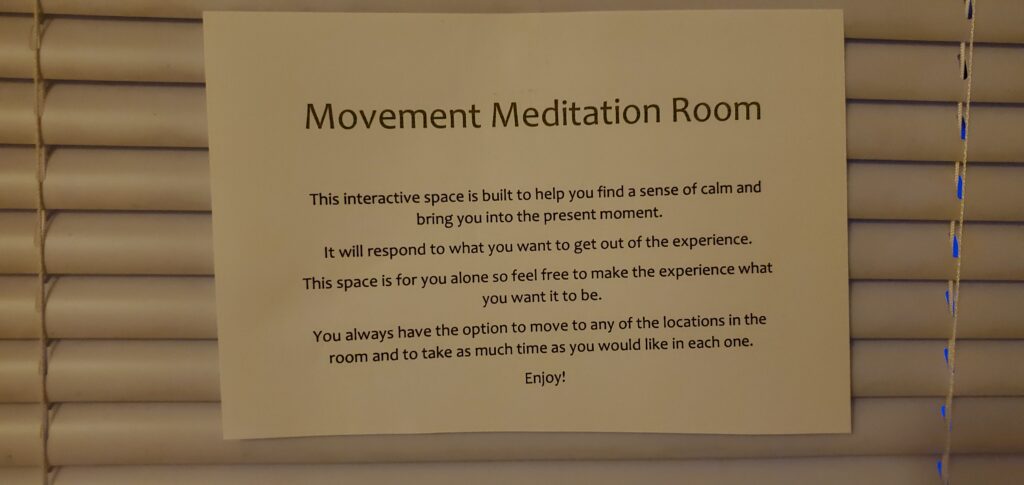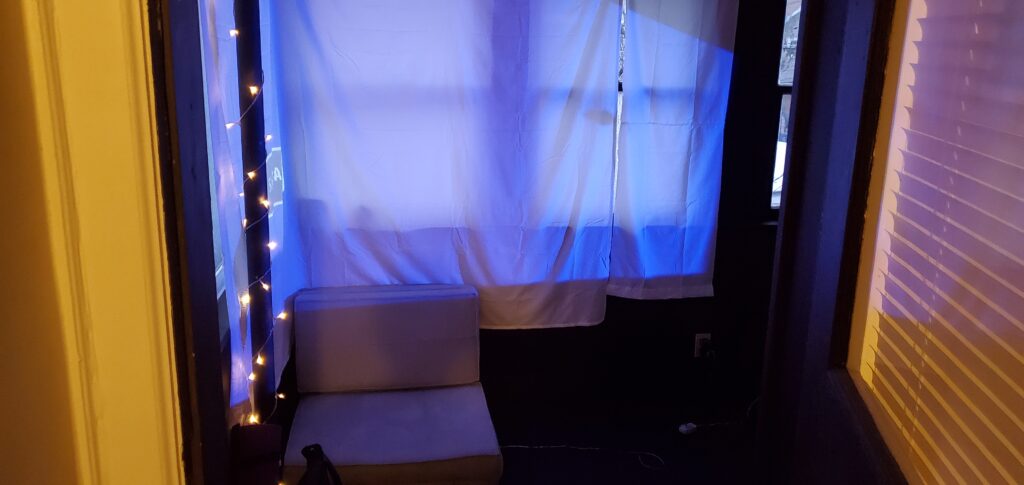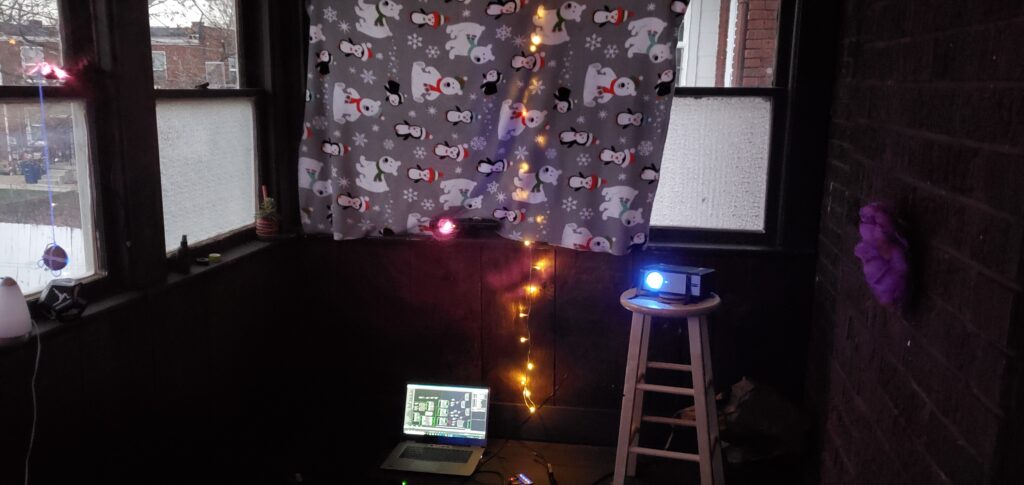Movement Meditation Room Cycle 3
Posted: December 13, 2020 Filed under: Uncategorized Leave a comment »Cycle 3 was a chance for me to figure out how to guide people through the experience. Now that all of the technical elements of the room worked consistently, I needed to think about how to guide people through the space. Originally I thought of putting something on the door that explained the room but I felt that there was a lot of information that wouldn’t make sense until they were in the room itself. So instead I went with an audio guidance system that would tell the user how each element of the room worked as they moved through the space. I still had a brief description on the door that would welcome users into the space:

Here is a link where you can watch me go through each of the room’s locations and hear the audio guidance system in action: https://osu.box.com/s/dd5izpw890mx3330r43qgdj3fazkux6i
It is important to note that it was possible for a user to move between locations of the room if they wanted to experience either of the locations again. The triggers were on timers so that the actions of a particular location could restart if the user decided to re-enter the space after leaving it for a certain amount of time. So the amount of time that someone spent in the space was totally up to them and what they wanted to experience.
Unfortunately, due to Covid restrictions, the only people who were able to experience this project was myself and one of my housemates. This is what she said about her experience: “The room offered me a place to reconnect with myself amidst the hectic everyday tasks of life. When in the room, I was able to forget about the things that always linger in the back of my mind, like school work and job applications, and focus on myself and the experience around me. The room was a haven that awakened my senses by helping me unplug from the busy city and allowing me to interact with the calming environment around me.” I thought it was interesting how she felt the technology in the room helped her “unplug” and her feedback gave me further questions about how technology can sometimes hide its influence on our surroundings, and give us experiences that feel “natural” or “unplugged” while also being dependent on technology.
Overall, this cycle felt very successful in providing a calming and centering experience that engaged multiple senses and could be guided by the user’s own interests. I tried to add a biofeedback system that would allow the user to have their heartbeat projected through the sound system of the room, hopefully encouraging deeper body awareness, but my technology was somewhat limited.
I used a contact microphone usually used for musical instruments to hear the heartbeat but because of its sensitivity, it would also pick up the movement of my tendons at my wrist if I moved my hand or fingers at all. Even though I did successfully create a heartbeat sound that matched the rhythm of my heartbeat, the requirement of complete stillness from the elbow down for it to work conflicted too much with goals that were more important to me, like comfort and freedom to move.
In continuing cycles, I might try to build a more robust biofeedback system for the heartbeat and breath. I might also look into the Hybrid Arts Lab locations that might be able to host a Covid-safe installation of the room for more people to experience.
Even if the project itself isn’t able to continue, I do feel I learned a lot about how different kinds of devices interface with Isadora and I have a saved global actor that houses the depth sensor trigger system that I used to structure the room. My realm of possibility has expanded to include more technology and interdisciplinary approaches to creating art. The RSVP cycles that we used to create these final projects has already helped me start to plan other projects. Coming out of this I feel like I have about a dozen more tools in my art toolbox and I am extremely grateful for the opportunity to develop my artmaking skills beyond dance.

